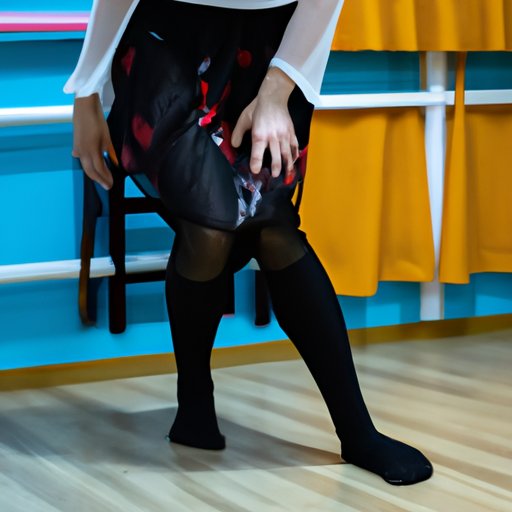Introduction
Choreographing a dance solo is an exciting yet challenging process. It requires dedication and creativity to create a unique performance that stands out from the rest. Whether you’re a beginner or an experienced dancer, understanding the basics of choreographing a dance solo can help you develop a memorable routine.
In this article, we will provide a comprehensive guide on how to choreograph a dance solo. We’ll break down each step of the process, from planning and practicing your routine to incorporating props and costumes. With these tips, you’ll be able to create an impressive dance solo that will wow your audience.
Break Down the Steps
The first step in choreographing a dance solo is to plan and practice your routine. Think about what type of song you want to use and consider which movements best fit the rhythm and melody of the song. You should also consider the intended audience and the desired effect of the routine. Once you have a clear idea of what you want to do, it’s time to get to work.
Next, you should structure the choreography. This involves breaking down the song into sections and creating a series of movements for each section. When structuring the choreography, consider the overall flow of the routine, as well as the transitions between each movement. It’s also important to consider the level of difficulty of each movement. Make sure that the routine is challenging but not too difficult for you to perform.
Showcase Your Style
Now that you have a basic outline of the routine, it’s time to add your own personal touch. Incorporate your own style into the choreography by adding signature moves or gestures. This will help make the performance more dynamic and interesting. Additionally, you can add improvisational elements to the routine to make it more unpredictable and spontaneous.
Get Creative with Music
Choosing the right song is essential for creating an effective dance solo. Listen to the song and try to draw inspiration from the lyrics, the rhythm, and the overall feel of the song. Consider how these elements can be used to create an engaging performance. For example, if the song has a slow tempo, then you could incorporate slower, more controlled movements into the choreography.
You can also use the song to create a story or narrative for the routine. Think about how the movements can reflect the meaning of the lyrics and how they can be used to communicate the story. By doing so, you can create an emotional connection with the audience and evoke a powerful response.
Embrace Improvisation
Once you’ve created the choreography, it’s time to learn it. Memorize each movement and practice until you are comfortable with the routine. However, don’t be afraid to add some spontaneity to the performance. Improvisation is an important part of any dance solo and can help make the routine more exciting and engaging.
When improvising, think about the overall flow of the routine and how the movements can be adapted or changed to fit the moment. Don’t be afraid to take risks and experiment with different ideas. By embracing improvisation, you can make the performance more dynamic and unique.
Connect with the Audience
When performing a dance solo, it’s important to engage the audience. Make eye contact with the audience members and use facial expressions to communicate the story of the routine. Additionally, maintain a high energy level throughout the performance. This will ensure that the audience remains engaged and excited.
Incorporate Props
Props and costumes can be used to enhance the choreography and create a more engaging performance. Consider adding props such as scarves, ribbons, or hats to the routine. Costumes can also be used to add drama and flair to the performance. When using props, make sure that they are appropriate for the routine and that they don’t distract from the choreography.
Record and Review
Before performing your dance solo in front of an audience, it’s important to record yourself and watch back the footage. This will help you identify any mistakes or areas for improvement. If necessary, make adjustments to the choreography accordingly. Recording yourself will also help you become more comfortable with the routine and boost your confidence when performing.
Conclusion
Choreographing a dance solo is a rewarding experience. By following the steps outlined in this article, you can create an impressive routine that will wow your audience. Remember to plan and practice your routine, showcase your style, get creative with music, embrace improvisation, connect with the audience, and incorporate props. With these tips, you’ll be able to create a unique and memorable performance.
(Note: Is this article not meeting your expectations? Do you have knowledge or insights to share? Unlock new opportunities and expand your reach by joining our authors team. Click Registration to join us and share your expertise with our readers.)
